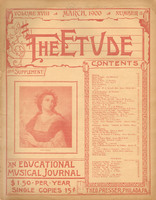There are no finger exercises so beneficial to an organist as those of Kullak in his “The Art of Touch,” and it is doubtful if Kullak could have devised any exercises which would have suited the needs of organists better than these, if, he had been an organist himself and had been thinking only of organists.
These exercises, which should always be practiced on the piano, consist of figurings for the hand, thus:

Those fingers represented by numerals which are underlined are held down (without having struck the keys to produce any tone) and the other figures indicate which fingers are to be played. In the first illustration fingers 1, 2, 3, and 4 are held down on any four contiguous keys and the fifth finger should strike the key any given number of times, say ten, for example. Likewise, in the second illustration the third finger should strike the key ten times. In the third illustration the fourth and fifth fingers should strike the keys alternately ten times. The same with the fourth illustration. In the fifth illustration the first and fifth fingers are held down and the second finger alternates with third and fourth struck together, and so on.
It will be readily seen that these exercises expose every weakness of the fingers which is of the nature of holding down one finger and striking another, and each organist can pick out those combinations which are the most troublesome, carrying them in the vest pocket or pocket-book, and practice them every time he has five minutes to spare.
An octavo edition of these exercises, edited by Otto Bendix and published by the New England Conservatory (15 cents is the price) should be in the possession of every advancing organist.



